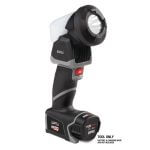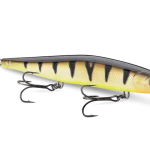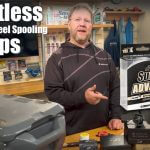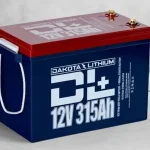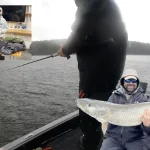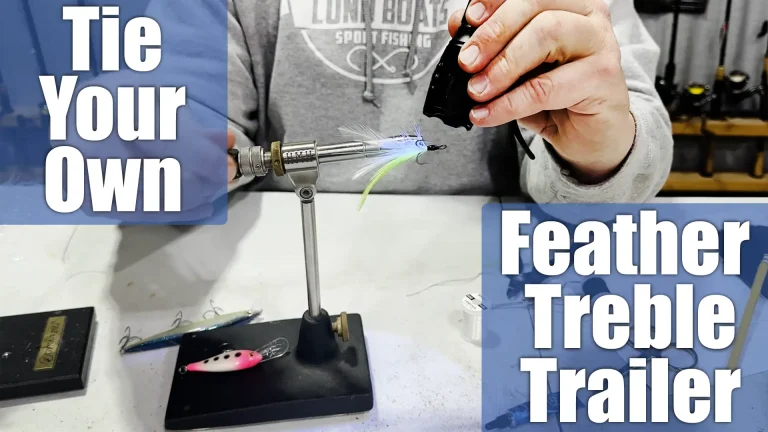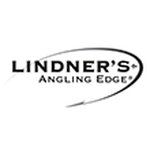Low Water Largemouth Video: During normal or even high water years, largemouth have plenty of places to live. But when the water is low, bass may have to abandon spots that have historically produced year after year. In this show, Al Lindner and Jeremy Smith show you how to find and catch bass when water levels are low.
Al and James Lindner target largemouth bass in low water conditions. They discuss their preferred tackle, including tungsten jigs and specific plastic that consistently produce bass in these conditions. They also share tips on fishing techniques for heavy cover and the importance of using specialized equipment. With their expertise and experience, anglers can improve their chances of success when targeting bass in similar conditions.
Fishing Heavy Cover
James claims that one of the keys to fishing in heavy cover is to let the bait fall on the slackline. He emphasizes that the bait should fall vertically to reach the zone where the fish are located. If the bait falls at an angle, it will get caught up on the tops of the weeds and not reach the fish. He states that it’s important to keep your rod tip angle up to help effectively work the bait back.
Al adds that using electronics, such as the Humminbird Mega 360, is crucial for understanding where the targets are. He mentions that the 360 technology lets him see waypoints and know precisely where the fish and cover are located in all directions. This helps him make accurate casts and land right on different pods of fish.
Tungsten Jigs: The Go-To Tackle
James’s go-to size for fishing in low water conditions is a three-quarter-ounce tungsten jig. He explains that although tungsten is more expensive than lead, it is worth the investment because it provides a better feel for what’s happening underwater, emphasizing that it’s hard to go back to lead once you start fishing with tungsten. Choosing the right size for the jig is important, and he suggests using a size that suits the depth you’re fishing. For instance, he pairs his tungsten jig with a 4/0 Extra Heavy VMC Extra Wide Gap Hook. To keep the plastic bait in place, he uses a stopper on the hook and cuts the tag.
Plastic Baits for Low Water Conditions
James shares that his favorite plastic bait for fishing in low water conditions is a craw tube, which has a big profile and goes through the cover really well. He likes using the extra wide gap hook with the craw tube because it allows for better hook penetration. Al likes the Big Bite Baits BFE (Best Flippin Bait Ever), which he rigs with a flipping hook with bait and praises its effectiveness in heavy cover. He shares that he has been catching many fish with this bait and even had to replenish his supply because it works so well.
The Importance of Specialized Equipment
Al and James both stress the importance of using specialized equipment for fishing in heavy cover. Al talks about his St. Croix Legend Xtreme Casting rod, which he considers the nicest rod in the lineup, featuring a high-end graphite blend, carbon guides, and unparalleled sensitivity.
James discusses the specialized reel he is using, the Daiwa Tatula Elite PF. He highlights the pitch and flip button on the reel, which allows for easy adjustment after making a cast. He also mentions the 100-millimeter handle and shallow spool, which provide extra torque and a low trajectory to the water, perfect for pitching and flipping.
They also discuss the importance of using the right line for heavy-cover fishing. James recommends using Suffix 832 braid in 30 to 40-pound tests for stained water conditions. He explains that fluorocarbon or clear lines are unnecessary in these conditions, and the fish don’t care about the line visibility. Al adds that fluorocarbon can be used in clear water conditions for a more stealthy approach.
Regarding bait color, James suggests using variations of green pumpkin, which is almost always a winner. He also mentions the effectiveness of dark-colored baits, such as black or black and blue, in darker-colored lakes. These baits provide contrast and stand out in the water, making them attractive to bass.
They conclude by emphasizing the thrill and excitement of fishing for bass in heavy cover. Al mentions that it never gets old, and James agrees, stating that this type of fishing is one of his absolute favorites because the fish are concentrated and aggressive.
Specialized Equipment
Al and James both stress the importance of using specialized gear for fishing in heavy cover. Al says his favorite rod is a Saint Croix Legend Extreme rod, which he considers the nicest rod in the lineup. He praises its technology, high-end graphite blend, and carbon guides for unparalleled sensitivity.
James discusses the specialized reel he is using, the Daiwa Tatula Elite PF. He highlights the pitch and flip button on the reel, which allows for easy adjustment after making a cast. He also mentions the 100-millimeter handle and shallow spool, which provide extra torque and a low trajectory to the water, perfect for pitching and flipping.
They also discuss the importance of using the right line for heavy-cover fishing. James recommends using Suffix 832 braid in 30 to 40-pound tests for stained water conditions. He explains that in these conditions, fluorocarbon or clear lines are not necessary, and the fish don’t care about the line visibility. Al adds that fluorocarbon can be used in clear water conditions for a more stealthy approach.
In terms of bait color, James suggests using variations of green pumpkin, which is almost always a winner. He also mentions the effectiveness of dark-colored baits, such as black or black and blue, in darker-colored lakes. These baits provide contrast and stand out in the water, making them attractive to bass.
They conclude by emphasizing the thrill and excitement of fishing for bass in heavy cover. Al mentions that it never gets old, and James agrees, stating that this type of fishing is one of his absolute favorites because the fish are concentrated and aggressive.
Fishing for largemouth bass in heavy cover. They discuss their preferred tackle, including tungsten jigs and specific plastic baits. They also share tips on fishing techniques for heavy cover and the importance of using specialized equipment. With their expertise and experience, anglers can improve their chances of success when targeting bass in similar conditions. ## Tungsten



